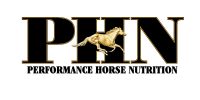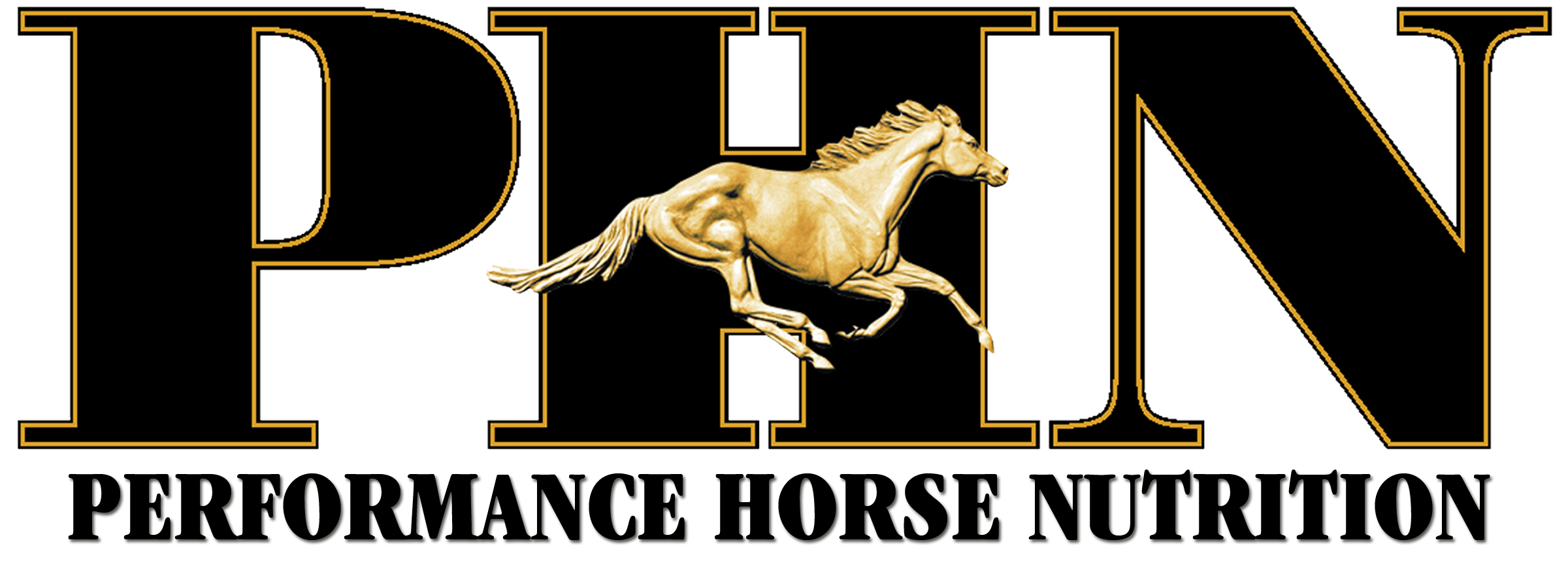A BALANCED DIET
March 2014

Written by Performance Horse Nutrition
For those people who own horses, properly feeding them is an important responsibility. A nutritionally balanced diet will allow horses to perform, reproduce, grow and maintain their health. However, with the current grain market and good quality hay in short supply, it can make feeding horses an expensive and perplexing proposition. In the last year, the price of corn, barley and wheat has increased an average of 55%. The cost of oats has increased nearly 20% compared to last year. With the price of grains increasing, the cost of commercial grain concentrates has followed suit. The hay market has shown a similar trend. Rainy weather during hay harvest has damaged hay in many parts of the country making quality horse hay difficult to find. Further, the price of fuel has increased both the production and delivery costs for hay. These factors add up to increased hay costs. How do horse owners balance their horses’ diets under a barrage of economic pressure?
With the exception of fresh, clean water, forage in the form of hay or pasture is the most important dietary ingredient we provide to horses. During the winter season, temperatures typically fall below that necessary for pasture grass to grow. Pastures that are depleted of natural forage become exercise areas and force the horse to replace pasture grass in their diet with stored forage in the form of hay. A horse requires a minimum of 1.5% of the body weight in dry forage per day. This means a 1000 lb horse would require a minimum of 15 lbs of hay per day. Horses can consume up to 3% of their body weight in hay (30 lbs for a 1000 lb horse) if the hay is of good quality.
Horses require good quality hay because their digestive tract is “one-way” in direction. Horses normally are not capable of vomiting, and they become sick if fed moldy or dusty hay. Hay quality can be determined in many ways. Stage of maturity, leafiness, color, foreign material, odor and condition are physical parameters that can be judged to determine quality. Physical quality can be determined by observation and comparison of hay samples. Below are some items that indicates what to look for in judging these physical parameters.
Physical Characteristics of High-Quality Hay:
Stage of Maturity -Early cut hay is more palatable and digestible. Look for short plants with few or no seed heads.
Leafiness – High quality hays have a high percentage of leaves (blades) to stems. Look for abundant leaves or blades, small, thin stems.
Color – Bright green color indicates proper curing, high vitamin content and good palatability. Loss of color indicates weather damage. Look for bright green color.
Foreign Material – Hay should not contain weeds or foreign material such as dirt, wire, sticks. Look for grass or Alfalfa bales with no weeds.
Odor/Condition/Mold – Odors such as musty or rotten odors indicate low quality hay that was not properly cured or stored. Look for: Clean, fresh smelling hay free of visible mold or excessive dust.
When high quality hay is in short supply, horse owners often must settle for marginal hay. Marginal hay is hay that was cut late, meaning it is very mature resulting in poor digestibility. Marginal hay may also have lost leaves and its green color indicating weather damage. These hays will have a lower nutrient content and lower calorie content, meaning more hay is necessary to meet the nutrient requirements of the horse. If more hay is not fed, or if horses will not eat enough hay, horses will become thin and have poor coat condition. Hay that is moldy, musty or contaminated with weeds, sticks, wire, paper or other foreign material is considered poor hay and it should never be fed to horses.
If marginal hay must be fed, the remainder of the diet must be adjusted to account for the lesser quality hay. There are several methods to account for marginal hay. The first is to replace a portion of the hay with a pelleted and/or cubed hay product or a forage extender product. These products typically contain high quality fiber that horses can readily digest. Feeding 1/3 of the total hay requirement as a forage pellet, cube or forage extender product will drastically improve the nutrients provided by the forage portion of the diet. If you account for the increased digestibility and less waste when feeding these products, their cost is often justified. A common concern with these products is if they provide horses with enough fiber. Since we are only replacing 1/3 of the hay portion of the diet with these products, fiber and length of fiber are not a concern. It is important to remember that hay pellets and/or cubes and forage extender products are not heavily fortified with vitamins and minerals. Therefore, they help account for marginal forage but they do not replace the grain concentrate or the supplement portion of the diet.
Another method to account for marginal hay is to feed “complete” products. A complete product is one that contains the forage, grain, vitamin and mineral portions of the diet. The word “complete” indicates they can be the only ingredient fed to the horse with the exceptions of water and salt. As you would expect, properly feeding a “complete” would entail a large feed intake. These intakes typically range from 12.5 – 20 lbs of “complete” per 1000 lb horse per day. Complete feeds can be used with marginal hays, but just like hay pellet and/or cubes and forage extenders they require that fortified grain concentrates and supplements still be provided to the horse. If plenty of marginal hay is available, a third method for making up the nutrients not in adequate supply in the forage would be to feed unfortified grains such as oats, corn or barley. Grain can never replace the forage component of the diet, but it can provide nutrients that are not in adequate supply in marginal forage. These grains would help satisfy the calorie requirements of the horses but would not provide adequate protein, vitamins or minerals since these nutrients are not added to the grains. The final option for making up for marginal hay is to feed a fortified grain concentrate. These products are fortified with protein, vitamins and minerals and they will allow the horse to achieve a nutritionally balanced diet. Selection of which fortified grain concentrate to be fed would depend on the nutrient content of your hay. For example, if you normally feed a 12% protein grain concentrate when good quality hay or pasture is available, you may need to feed a grain concentrate with a higher protein, vitamin and mineral content to account for the marginal hay. The higher nutrient profile grains are typically more expensive since they have more nutrition, but these products would need to be fed to achieve nutrient balance.
In conclusion, always make sure the horse first has an adequate amount of forage available. If that forage is in limited supply, feeding a forage pellet and/or cube, forage extender product or complete feed would be appropriate to provide additional fiber. If the forage is of marginal quality but in adequate supply, the nutrient deficits of the marginal hay can be made up by feeding unfortified grains (oats, corn, barley) and adding supplements. An easier method to balance the diet is to select a grain concentrate fortified with protein, vitamins and minerals to properly balance the diet. This will eliminate much of the expense and potential supplementing errors. Finally if you have a question on what to feed your horse, contact your feed manufacturer for advice.

